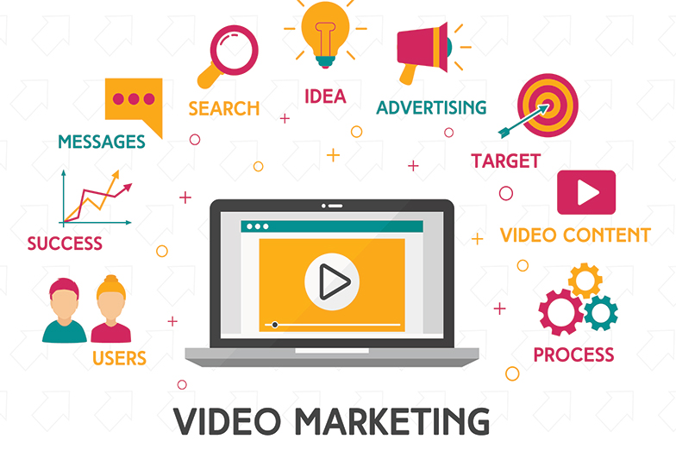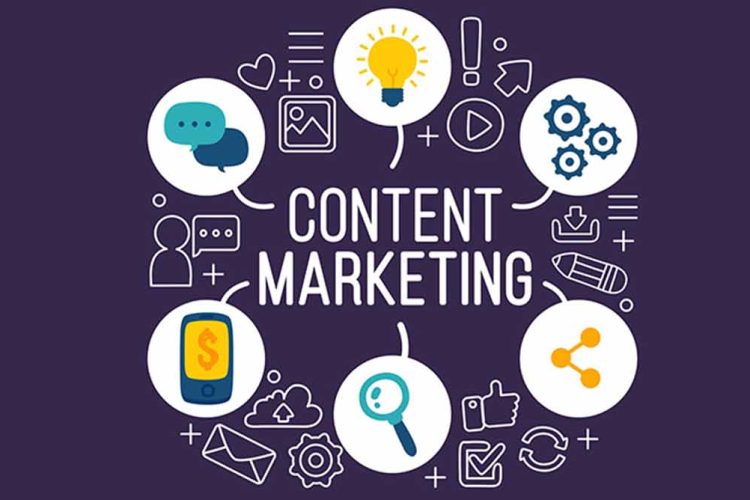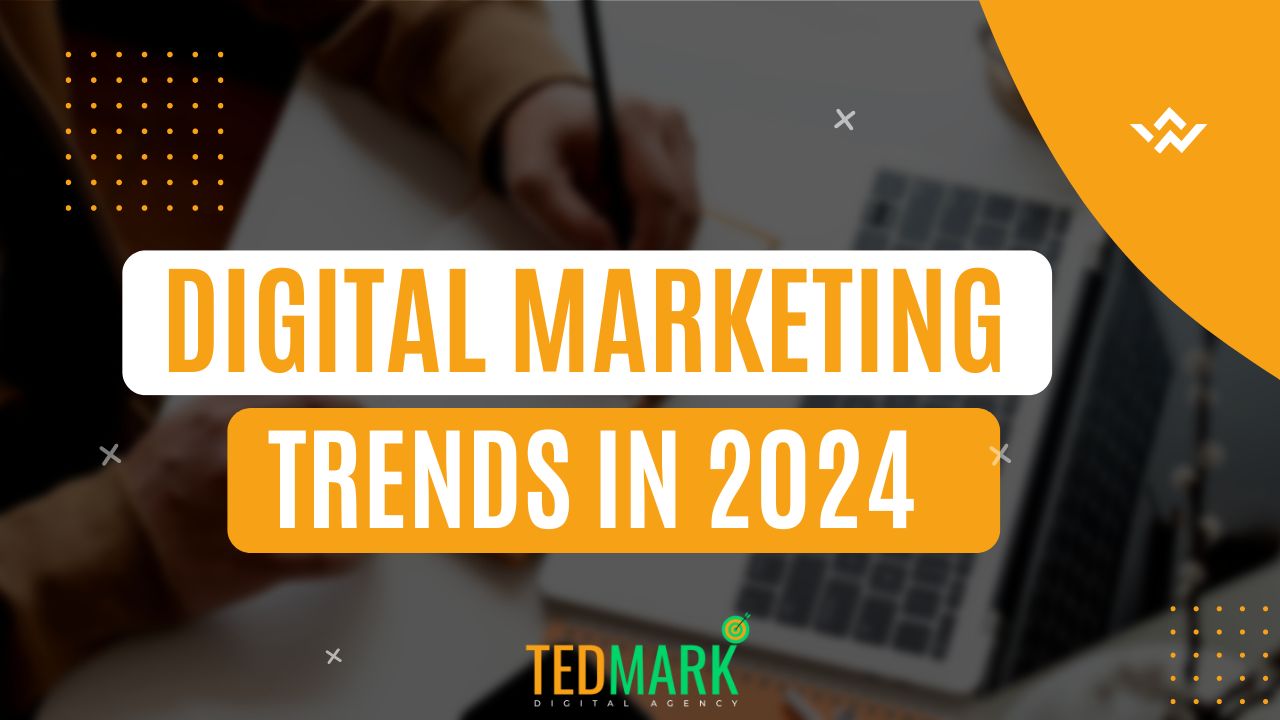
Introduction: Digital Marketing Trends in 2024.
Digital marketing is a dynamic and ever-changing field that requires constant adaptation and innovation. With the rapid development of new technologies and the changing behavior of consumers, digital marketing is facing new challenges and opportunities every day. To succeed in this competitive market, businesses need to stay ahead of the curve and embrace the latest trends that will define the future of digital marketing.
In this article, we will discuss some of the key digital marketing trends that you need to watch out for in 2024. These trends are not just predictions or speculations, but are based on solid research and evidence from various sources. We will explain what these trends are, why they are important, and how you can use them to your advantage. By the end of this article, you will have a better understanding of the future of digital marketing and how you can prepare for it.
Some of the trends that we will cover in this article are:
- Hyper-personalization: How to deliver individualized content, product suggestions, and offers to your customers using advanced analytics, AI, and machine learning.
- Voice Search Optimization (VSO): How to optimize your content for voice search and improve your visibility in voice search results using long-tail keywords and natural language queries.
- AI-Driven Marketing Analytics: How to use AI algorithms to provide actionable insights, customer segmentation, and predictive analytics for your marketing strategies.
- Video Marketing: How to use short-form and long-form video content on social media and YouTube to showcase your products, services, and brand stories.
- Augmented Reality (AR) and Virtual Reality (VR) Marketing: How to use AR and VR technologies to provide unique and interactive experiences that set you apart from your competitors.
- Influencer Marketing Evolution: How to partner with micro-influencers who have smaller but highly engaged and niche-specific audiences.
- Conversational Marketing with Chatbots: How to use chatbots to provide real-time, personalized customer service, answering queries and solving problems.
Let’s dive into each trend and see how you can use them to grow your business and connect with your target audience in innovative ways.
I. Hyper-personalization
Hyper-personalization is the most advanced way to tailor your marketing strategy to individual customers. It uses big data, analytics, AI, and automation to create custom and targeted experiences in real time. Hyper-personalization is not just a nice-to-have feature, but a necessity in today’s competitive market. According to recent research, 86% of companies report seeing a measurable uptick in business results from hyper-personalization. Moreover, 90% of consumers say they find personalized marketing appealing, and 40% of them say they will likely buy from a brand again after a personalized shopping experience.

But what exactly is hyper-personalization and how does it differ from personalization and segmentation? How do consumers feel about hyper-personalization? And how can you implement it in your digital marketing strategy? In this section, we will answer these questions and provide some examples of hyper-personalization in action.
Hyper-personalization vs. personalization
Personalization is a marketing tactic that uses basic data, such as your location and purchase history, to serve you relevant marketing content. For example, you might get a geo-targeted Instagram ad or an email with your first name in the subject line. Personalization worked well in its early days, but as the digital marketing space became more crowded, it became less effective and more generic.
Hyper-personalization takes personalization to the next level by using more advanced technology and data. It leverages real-time behavioral data, such as your browsing history, search queries, and preferences, to deliver individualized content, product suggestions, and offers that match your specific needs and interests. For example, Netflix uses real-time data and AI to come up with a personalized grid of movie and TV suggestions catered to your specific tastes.
Hyper-personalization vs. segmentation
Segmentation is another core element of marketing campaigns. It groups customers into subsets based on shared characteristics, such as age, gender, location, average spend, etc. Segmentation helps marketers target shoppers and develop relevant offerings for different customer segments.
Hyper-personalization does this too, but dives much deeper into the data so that the customer segment is reduced to a single individual. This segment-of-one approach allows marketers to tailor their marketing so they can deliver the most relevant messaging via the most relevant channels. For example, Sitecore uses AI and analytics to create personalized web experiences for each visitor based on their behavior, preferences, and context.
How do consumers feel about hyper-personalization?
Consumers are increasingly willing to trade personal data for practical benefits such as highly personalized interactions. They expect brands to understand their needs and preferences and provide them with relevant and timely offers. They also appreciate when brands make their lives easier and more convenient by offering personalized solutions.
However, consumers also have some concerns about hyper-personalization. They want to have control over their data and privacy. They want to know how their data is collected, used, and shared by brands. They also want to have the option to opt out of hyper-personalization if they feel uncomfortable or overwhelmed by it.
Therefore, marketers need to balance the benefits and risks of hyper-personalization. They need to be transparent and ethical about their data practices. They need to respect their customers’ choices and preferences. And they need to provide value and trust in exchange for their customers’ data.
II-Voice Search Optimization (VSO)
Voice search optimization (VSO) is the process of optimizing your website content for voice search. Voice search is a type of search that uses voice commands instead of typing on a device, such as a smartphone or a smart speaker. Voice search is becoming more popular, especially with the rise of voice assistants like Google Assistant, Siri, Alexa, and Cortana.
It’s crucial for businesses to fine-tune their content for voice search and boost their visibility in voice search results. VSO can help increase your website traffic, conversions, and revenue from voice search users.
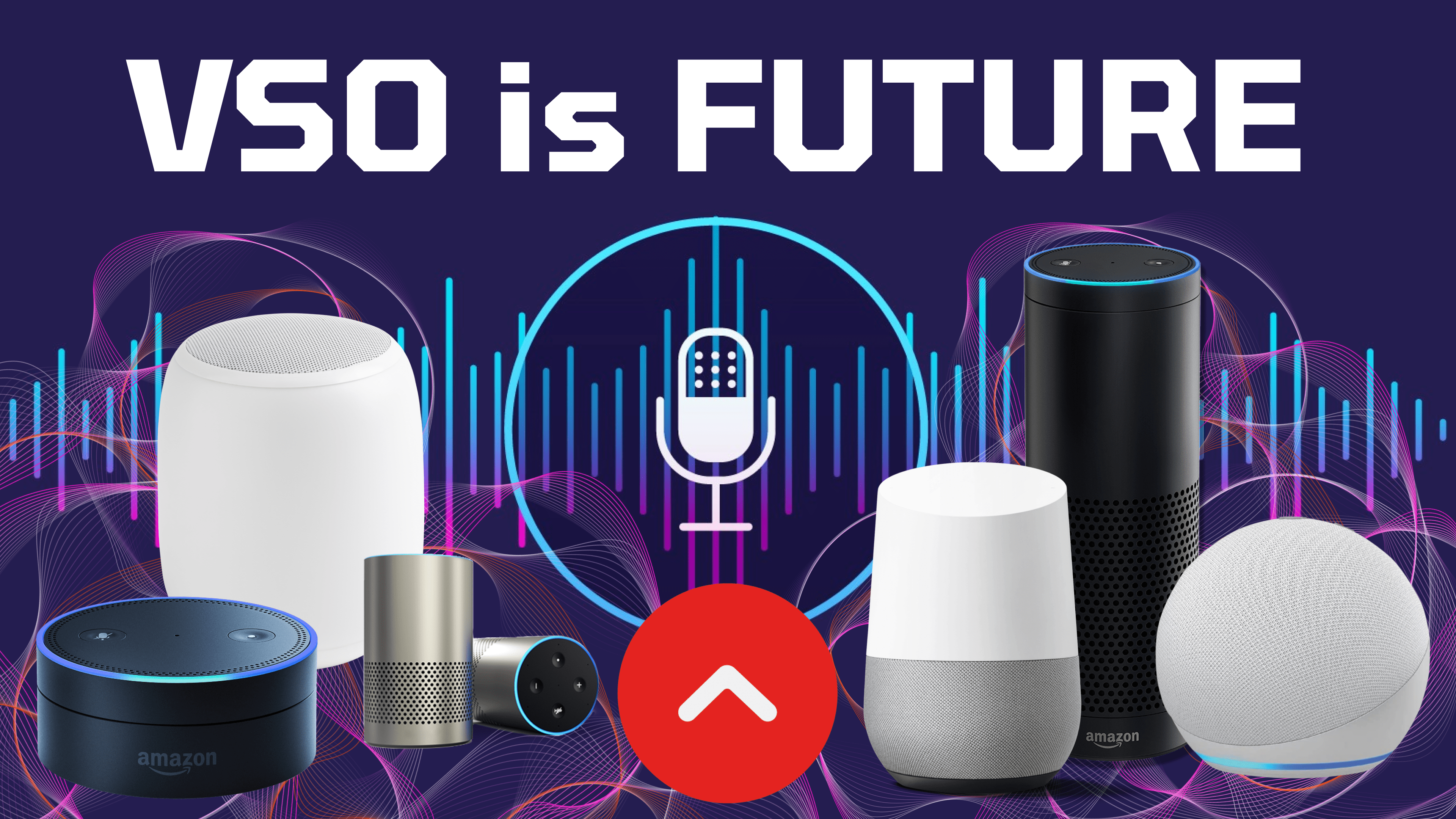
How does voice search work?
Voice search works by using natural language processing (NLP) and artificial intelligence (AI) to understand and respond to verbal queries. When a user asks a question using voice commands, the voice assistant analyzes the query and tries to find the best answer from the web or its own database.
The voice assistant then reads the answer aloud or displays it on the screen, depending on the device and the query. Sometimes, the voice assistant also sends a link to the source website or app to the user’s device for further information.
How is voice search different from text search?
Voice search is different from text search in several ways. Some of the main differences are:
- Voice search queries are longer and more conversational than text search queries. For example, a text search query might be “weather Paris”, while a voice search query might be “What’s the weather like in Paris?”.
- Voice search queries are more likely to be questions than statements.
- Voice search queries are more likely to use natural language and colloquial terms than formal language and keywords.
- Voice search queries are more likely to be local and mobile than text search queries.
How to optimize your website for voice search?
To optimize your website for voice search, you need to follow these tips:
- Use long-tail keywords and natural language queries that match how people speak and ask questions.
- Include featured snippets in your content that provide concise and direct answers to common voice search queries. Featured snippets are short excerpts from your web pages that appear at the top of Google’s organic results. They can help you rank higher in voice search results and increase your click-through rate.
- Use schema markup and structured data to provide additional information about your web pages to Google and other search engines. Schema markup is a code that helps Google understand what your content is about and display it in rich results, such as images, ratings, prices, etc. Structured data is a standardized format that helps Google provide relevant information to users in response to their queries.
- Optimize your website for mobile devices and local searches. Since most voice searches are done on mobile devices and have local intent, you need to make sure that your website is responsive, fast-loading, and easy to navigate on small screens. You also need to optimize your Google My Business profile, use local keywords, and get positive reviews from your customers.
- Create high-quality content that answers your audience’s questions and provides value to them. You need to research your audience’s needs, preferences, and pain points and create content that addresses them. You also need to use clear headings, bullet points, lists, and short paragraphs to make your content easy to read and scan.
- Monitor and measure your voice search performance using tools like Google Search Console, Google Analytics, and Google Voice Search Rank Tracker. You need to track metrics like impressions, clicks, rankings, conversions, and revenue from voice searches and analyze them to identify what works and what doesn’t. You also need to test different strategies and optimize them based on the results.
Voice search optimization is an essential part of digital marketing in 2024. It can help you reach more customers who use voice assistants and provide them with better experiences. By following these tips, you can optimize your website for voice search and grow your business online.
III. AI-Driven Marketing Analytics
AI-driven marketing analytics are the use of artificial intelligence (AI) and machine learning (ML) to analyze and optimize marketing data and performance. AI-driven marketing analytics can help marketers gain deeper insights into their customers, campaigns, and competitors, and make data-driven decisions that improve their marketing strategies and outcomes.
According to a report by Salesforce, 57% of marketing leaders say AI is absolutely or very essential in helping them provide personalized experiences for their customers. Moreover, Gartner predicts that by 2023, 60% of B2B sales organizations will transition from experience- and intuition-based selling to data-driven selling, merging their sales process, applications, data, and analytics into a single operational practice.

Therefore, it is crucial for businesses to adopt AI-driven marketing analytics and leverage their potential to enhance their marketing performance and growth. AI-driven marketing analytics can help businesses with various aspects of marketing, such as:
- Customer segmentation: AI-driven marketing analytics can help businesses segment their customers based on various criteria, such as demographics, behavior, preferences, needs, and interests. This can help businesses tailor their marketing messages and offers to each segment and increase their relevance and engagement.
- Customer journey mapping: AI-driven marketing analytics can help businesses map the customer journey from awareness to purchase to retention. This can help businesses understand the customer pain points, motivations, and expectations at each stage and provide them with the best solutions and experiences.
- Content creation and optimization: AI-driven marketing analytics can help businesses create and optimize their content for different channels, platforms, and audiences. This can help businesses generate high-quality content that attracts, informs, persuades, and converts their customers.
- Campaign management and optimization: AI-driven marketing analytics can help businesses manage and optimize their campaigns across multiple channels and platforms. This can help businesses monitor their campaign performance, measure their return on investment (ROI), and optimize their budget allocation and bidding strategies.
- Competitive analysis: AI-driven marketing analytics can help businesses analyze their competitors’ strengths, weaknesses, opportunities, and threats. This can help businesses benchmark their performance against their competitors and identify gaps and areas for improvement.
IV. Video Marketing
Video marketing is the use of video content to promote your products, services, or brand. Video marketing is one of the most powerful and popular forms of digital marketing, as it can capture attention, convey emotions, and deliver information in an engaging and memorable way.
Video marketing can help businesses with various goals, such as:
- Educating customers: Video marketing can help businesses educate their customers about their products, services, or industry. Video marketing can explain complex concepts, demonstrate features and benefits, and answer frequently asked questions.
- Entertaining customers: Video marketing can help businesses entertain their customers and create a positive association with their brand. Video marketing can use humor, storytelling, or creativity to capture attention and generate emotions.
- Inspiring customers: Video marketing can help businesses inspire their customers and motivate them to take action. Video marketing can use testimonials, case studies, or social proof to showcase success stories and build trust.
- Engaging customers: Video marketing can help businesses engage their customers and encourage them to interact with their brand. Video marketing can use live streams, polls, quizzes, or user-generated content to create a sense of community and loyalty.
How to create and optimize your video content?
To create and optimize your video content, you need to follow these tips:
- Define your target audience and video goals: Before you start creating your video content, you need to know who you are creating it for and what you want to achieve. Identify your target audience’s needs, preferences, and pain points and align them with your video goals. For example, if your goal is to educate your audience about your product, you need to create a video that explains how it works and how it solves their problems.
- Choose the right type of video for your purpose: Depending on your video goals, you need to choose the right type of video that suits your purpose. There are many types of videos you can create, such as:
- Explainer videos: These are short videos that explain a product, service, or concept in a simple and clear way.
- Tutorial videos: These are videos that teach or show how to do something step by step.
- Demo videos: These are videos that demonstrate how a product or service works in real life.
- Testimonial videos: These are videos that feature satisfied customers sharing their positive experiences with a product or service.
- Case study videos: These are videos that showcase how a product or service helped a customer achieve a specific goal or solve a specific problem.
- Storytelling videos: These are videos that tell a story related to a product, service, or brand.
- Live videos: These are videos that are streamed live on social media platforms or websites.
- Interactive videos: These are videos that allow viewers to interact with the content by clicking, choosing options, answering questions, etc.
- Write a script and storyboard for your video: A script is a written document that contains the dialogue and narration of your video. A storyboard is a visual representation of your script that shows how each scene will look like. Writing a script and storyboard helps you plan your video content and structure it logically. It also helps you avoid mistakes and save time during the filming and editing process.
- Film and edit your video: Once you have your script and storyboard ready, you need to film your video using the appropriate equipment and settings. You need to consider factors such as lighting, sound, camera angles, etc. After filming your video, you need to edit it using software tools such as Adobe Premiere Pro or iMovie. You need to cut out unnecessary parts, add transitions, effects, music, captions etc.
- Optimize your video for SEO and distribution: After creating your video content, you need to optimize it for SEO (search engine optimization) and distribution. This means making sure that your video is easy to find and watch by your target audience. You need to consider factors such as:
- Title: Your title should be catchy and descriptive of what your video is about. It should also include relevant keywords that match what people search for.
- Description: Your description should provide more information about your video content and include a call-to-action (CTA) that tells viewers what to do next. It should also include relevant keywords and links to your website or other resources.
- Tags: Your tags should be words or phrases that describe your video content and help it rank higher in search results. They should also include relevant keywords and categories.
- Thumbnail: Your thumbnail is the image that represents your video on search results and social media platforms. It should be eye-catching and relevant to your video content. It should also include text or graphics that convey your message.
- Subtitles: Your subtitles are the text that appears on the screen along with your video. They help viewers understand your video better, especially if they have hearing difficulties or speak a different language. They also help your video rank higher in search results, as they provide more keywords and context for search engines.
Video marketing is the future of digital marketing. It can help you reach more customers who prefer watching videos over reading text. It can also help you communicate your message more effectively and persuasively. By following these tips, you can create and optimize your video content and grow your business in 2024.
V. Augmented Reality (AR) and Virtual Reality (VR) Marketing
Augmented reality (AR) and virtual reality (VR) are technologies that create immersive and interactive experiences for users. AR adds digital elements to the real world, such as filters, animations, or information. VR transports users to a simulated environment, such as a game, a movie, or a destination.

It is vital for businesses to adopt AR and VR marketing and leverage their potential to differentiate themselves from their competitors and provide unique and memorable experiences for their customers. AR and VR marketing can help businesses with various objectives, such as:
- Increasing brand awareness: AR and VR marketing can help businesses attract attention and generate buzz around their brand. AR and VR marketing can use creative and innovative ways to showcase their brand identity, values, and stories.
- Enhancing customer engagement: AR and VR marketing can help businesses engage their customers and encourage them to interact with their brand. AR and VR marketing can use gamification, personalization, or social features to create fun and engaging experiences that increase customer loyalty and retention.
- Improving customer satisfaction: AR and VR marketing can help businesses improve their customer satisfaction and trust. AR and VR marketing can use realistic and immersive simulations to demonstrate their products, services, or solutions. This can help customers make informed decisions, reduce uncertainty, and increase confidence.
- Boosting sales and conversions: AR and VR marketing can help businesses boost their sales and conversions by providing customers with more value and convenience. AR and VR marketing can use interactive and immersive features to showcase their products, services, or offers in a more appealing and persuasive way.
AR and VR marketing is the future of digital marketing. It can help you create a competitive advantage in the market by providing you with unique and memorable experiences for your customers. It can also help you communicate your message more effectively and persuasively. By following these tips, you can create and optimize your AR and VR content and grow your business in 2024.
VI. Influencer Marketing Evolution
Influencer marketing is the practice of partnering with influential people who have a large and loyal following on social media platforms to promote your products, services, or brand. Influencer marketing is one of the most effective and popular forms of digital marketing, as it can increase your brand awareness, credibility, and sales.
Therefore, it is vital for businesses to adopt influencer marketing and leverage its potential to reach and engage their target audience. However, influencer marketing is not static, but evolving with changing consumer behavior and preferences. Here are some of the key trends that will shape influencer marketing in 2024:
- Authenticity: Consumers are becoming more savvy and skeptical about influencer marketing. They want to see authentic and honest content from influencers who share their values and opinions. They also want to see proof of the influencers’ expertise and experience with the products or services they promote. Therefore, businesses need to partner with influencers who are genuine and transparent about their collaborations and endorsements.
- Long-term partnerships: Businesses are shifting from one-off campaigns to long-term partnerships with influencers. Long-term partnerships allow businesses to build trust and loyalty with their audience and influencers. They also allow businesses to create consistent and coherent content that aligns with their brand identity and goals. Therefore, businesses need to invest in building strong relationships with influencers who share their vision and mission.
- Micro-influencers: Businesses are turning to micro-influencers who have smaller but highly engaged and niche-specific audiences. Micro-influencers have more influence and credibility than macro-influencers who have millions of followers but lower engagement rates. Micro-influencers also have more personal connections with their followers and can generate higher conversions and ROI. Therefore, businesses need to identify and work with micro-influencers who match their target audience and niche.

How to create and optimize your influencer marketing strategy?
To create and optimize your influencer marketing strategy, you need to follow these tips:
- Define your target audience and campaign goals: Before you start looking for influencers, you need to know who you are targeting and what you want to achieve. Identify your target audience’s needs, preferences, and pain points and align them with your campaign goals. For example, if your goal is to increase brand awareness, you need to target an audience that is not familiar with your brand.
- Choose the right platform and type of content for your campaign: Depending on your target audience and campaign goals, you need to choose the right platform and type of content for your campaign. There are many platforms you can use for influencer marketing, such as Instagram, YouTube, TikTok etc. Each platform has its own features, advantages, and disadvantages. You also need to choose the right type of content for your campaign, such as:
- Posts: These are images or videos that appear on the influencers’ feed or profile. They can showcase your products or services in a natural and creative way.
- Stories: These are short videos or images that disappear after 24 hours. They can provide behind-the-scenes glimpses or sneak peeks of your products or services.
- Reels: These are short videos that loop on Instagram. They can feature music, effects, or transitions to create engaging and entertaining content.
- IGTV: These are longer videos that can be up to 60 minutes on Instagram. They can provide in-depth reviews or tutorials of your products or services.
- Live: These are live videos that stream on Instagram or YouTube. They can provide real-time interactions or Q&A sessions with your audience.
- Podcasts: These are audio recordings that can be listened to on various platforms. They can provide informative or inspirational content about your products or services.
- Find and vet influencers who fit your brand: Once you have decided on the platform and type of content for your campaign, you need to find and vet influencers who fit your brand. You can use various tools or platforms to search for influencers based on keywords, hashtags, categories etc. You also need to check their profiles, content, engagement rates etc. You need to look for influencers who:
- Have a large and loyal following that matches your target audience
- Have a high engagement rate that indicates their influence and trust
- Have a relevant niche or expertise that relates to your products or services
- Have a consistent style and tone that aligns with your brand identity
- Have a positive reputation and feedback from their followers
- Reach out and negotiate with influencers: After finding and vetting influencers who fit your brand, you need to reach out and negotiate with them. You can use email, direct message, or phone call to contact them. You need to introduce yourself and your brand, explain your campaign goals and expectations, and propose a collaboration offer. You also need to negotiate the terms and conditions of the collaboration, such as:
- The type and number of content to be created and posted
- The timeline and deadline of the campaign
- The compensation and payment method
- The disclosure and hashtag requirements
- The performance metrics and reporting
- Monitor and measure your campaign performance: After launching your campaign, you need to monitor and measure your campaign performance. You need to track metrics such as impressions, reach, views, likes, comments, shares etc. You also need to measure metrics such as conversions, sales, ROI etc. You need to use tools such as Google Analytics, Facebook Pixel, or Instagram Insights to collect and analyze your data. You also need to get feedback from your influencers and audience to evaluate your campaign effectiveness.
Influencer marketing is the future of digital marketing. It can help you reach more customers who trust and follow influencers’ recommendations. It can also help you create authentic and engaging content that showcases your products or services. By following these tips, you can create and optimize your influencer marketing strategy in 2024.
VII- Conversational Marketing with Chatbots
Conversational marketing is the practice of using chatbots to communicate with your customers and prospects in real time. Chatbots are software applications that use natural language processing (NLP) and artificial intelligence (AI) to understand and respond to human messages. Chatbots can be integrated with various platforms, such as websites, social media, messaging apps, or voice assistants.
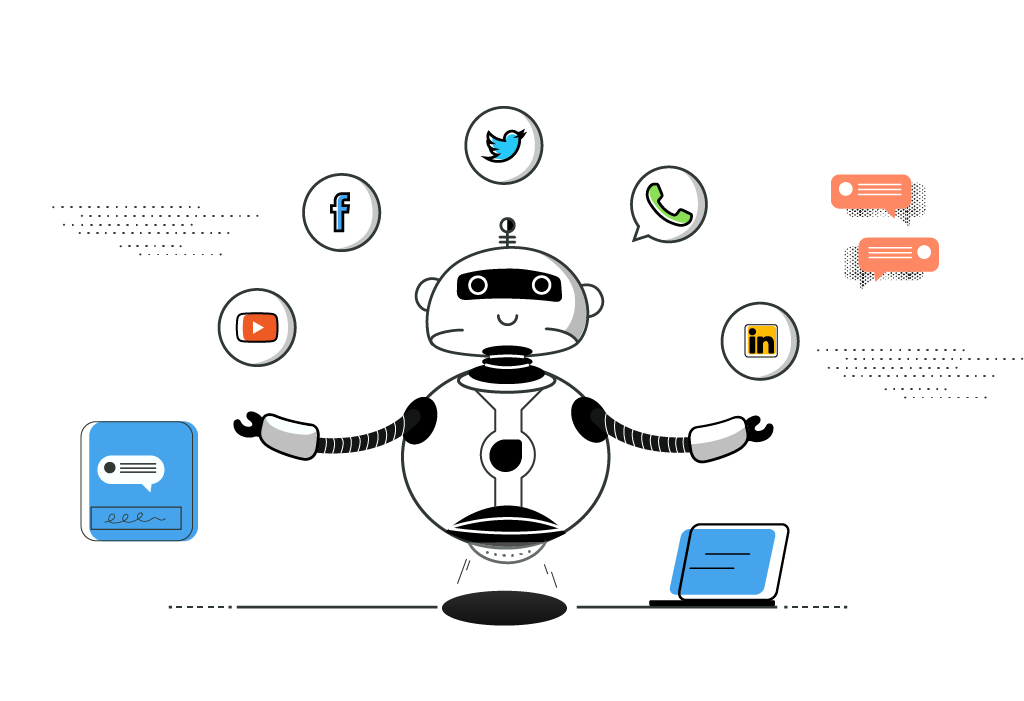
Conversational marketing with chatbots can help businesses with various goals, such as:
- Generating leads: Chatbots can help businesses generate leads by engaging visitors on their website or social media and asking them qualifying questions. Chatbots can also collect contact information and schedule appointments or demos.
- Nurturing relationships: Chatbots can help businesses nurture relationships with their customers and prospects by providing relevant and timely information, tips, or offers. Chatbots can also follow up with customers and prospects and remind them of their actions or tasks.
- Solving problems: Chatbots can help businesses solve problems by answering common questions or providing troubleshooting guides. Chatbots can also escalate complex issues to human agents or provide feedback forms.
- Increasing sales: Chatbots can help businesses increase sales by recommending products or services based on customers’ needs and preferences. Chatbots can also upsell or cross-sell products or services and facilitate payments.
Conversational marketing with chatbots is the future of digital marketing. It can help you provide personalized and instant customer service that increases customer satisfaction and loyalty. It can also help you improve your marketing performance by generating leads, nurturing relationships, solving problems, and increasing sales.
Conclusion
The digital marketing landscape is continually evolving, and staying ahead of the curve is essential for business success. In 2024, hyper-personalization, voice search optimization, AI-driven marketing analytics, video marketing evolution, sustainability and ethical marketing, privacy-first marketing, and AR/VR will be among the key trends shaping the industry.
Incorporating these trends into your digital marketing strategy can help you connect with your audience more effectively, drive better results, and build long-lasting trust and loyalty. As you navigate the ever-changing digital marketing dance, keep these trends in mind and be ready to adapt and innovate in response to the dynamic digital landscape of 2024 and beyond.






